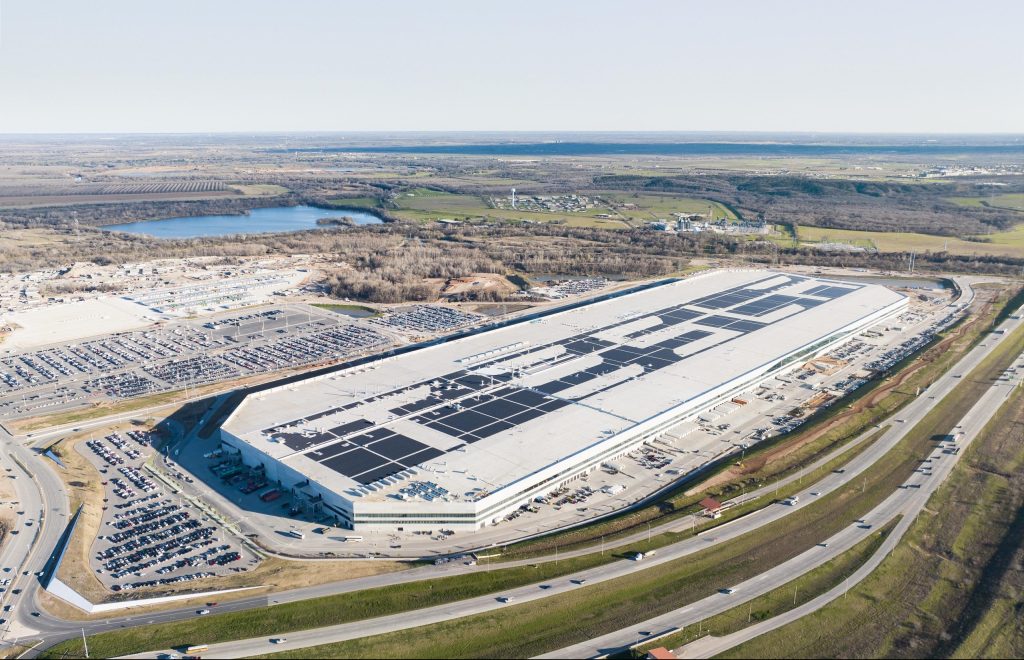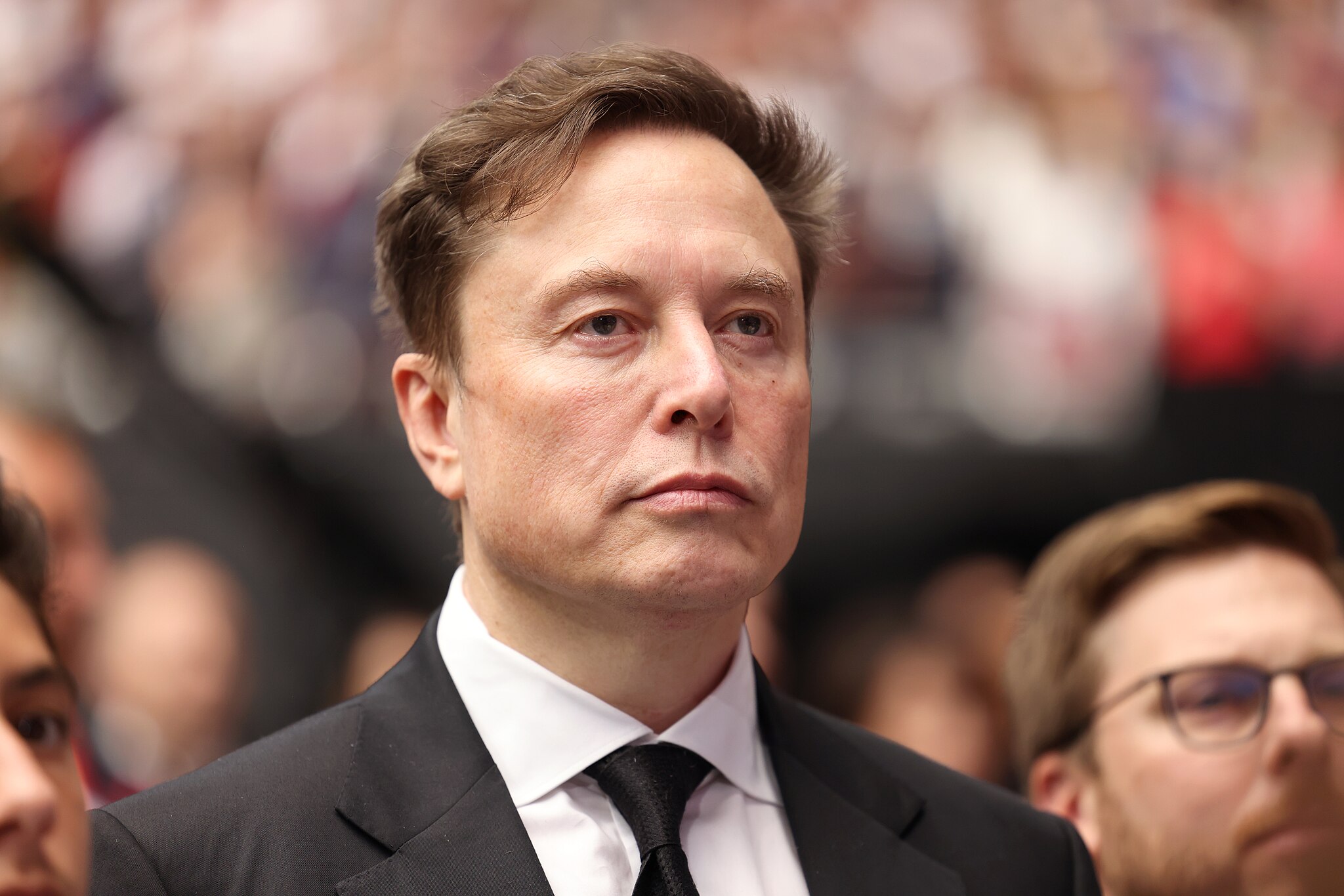News
Tesla talks Semi ramp, Optimus, Robotaxi rollout, FSD with Wall Street firm

Tesla (NASDAQ: TSLA) recently talked about a variety of topics with Wall Street firm Piper Sandler, as the firm released a new note on Friday about their meeting with the company’s Investor Relations team.
According to the note from Piper Sandler, Tesla talked in detail about the Semi program, Optimus, and its potential valuation given its capabilities, the rollout of Robotaxi in Austin, and Full Self-Driving progress in the United States.
Tesla Semi Ramp
The Tesla Semi is set to enter mass production in 2026 at a dedicated factory near the company’s Gigafactory in Reno, Nevada.
The Semi has already been in pilot program testing, as Tesla has partnered with a few companies, like Frito-Lay and PepsiCo., to perform regional logistics. It has been met with excellent reviews from drivers, and it has helped give Tesla a good idea of what to expect when it makes its way to more companies in the coming years.
Piper Sandler said that it is evident Tesla is preparing for a “major ramp,” but it is keeping its expectations low:
“We’ve never expected much from this product, but we’d love to be proven wrong (Tesla is clearly prepping for a major ramp).”
Tesla Optimus and its value internally and externally
Optimus has been working in Tesla factories for some time, but its expectations as a product offering outside of the company internally have major implications.
Its role within Tesla factories, for now, is relatively low, but Optimus is still doing things to assist. By this time next year, Piper Sandler said Optimus should have bigger responsibilities:
“By this time in 2026, Optimus should be moving/staging parts within Tesla’s facilities.”
Outside of Tesla, Optimus could be a major beneficiary for companies as it could be a more affordable way to handle tedious tasks and manual labor. The firm believes that if Optimus can work 18-hour shifts, a cost of $100,000 per unit “would be justified.”
Tesla Robotaxi Expansion
The big focus of the firm with Robotaxi was Tesla’s expansion of the geofence in Austin this week. It was substantial, bringing the Robotaxi’s total service area to around 170 square miles, up from the roughly 90 square miles that rival Waymo is offering in the city.
Tesla Robotaxi geofence expansion enters Plaid Mode and includes a surprise
Tesla has doubled its geofence three times since its launch in late June, and it also revealed that its fleet of vehicles has expanded by 50 percent. It did not give a solid number of how many vehicles are operating in the fleet.
Tesla Full Self-Driving v14 launch
Tesla’s Full Self-Driving suite is set to have a fresh version, v14, rolled out in either September or October, and there are some pretty high expectations for it.
CEO Elon Musk said:
“The FSD release in about 6 weeks will be a dramatic gain with a 10X higher parameter count and many other improvements. It’s going through training & testing now. Once we confirm real-world safety of FSD 14, which we think will be amazing, the car will nag you much less.”
There is also some expectation that v14 could be the public release of what Tesla is running in Austin for Robotaxi. The firm confirmed this in their note by stating it “should enable Tesla owners to use software that is on par with Robotaxis in Austin.”
The only real hold up would be regulator skepticism, but Tesla can alleviate this with strong data.
The firm maintained its ‘Overweight’ rating and the $400 price target it holds on the stock.

Elon Musk
Tesla’s Elon Musk accepts invitation to Israel’s Smart Transportation Conference
The announcement was shared by the Israeli Prime Minister in a post on social media platform X.

Elon Musk has reportedly accepted an invitation from Israeli Prime Minister Benjamin Netanyahu to participate in the country’s Smart Transportation Conference in March 2026.
The announcement was shared by the Israeli Prime Minister in a post on social media platform X.
A call and an invitation
Netanyahu posted on X about Musk, stating in Hebrew: “Last night, I held a joint conference call from Florida with entrepreneur Elon Musk, Minister of Transportation Miri Regev, and the head of the National AI Headquarters, Erez Askal. In the framework of the conversation, Musk responded to my invitation and Minister Regev’s invitation to participate in the Smart Transportation Conference that will be held in March.”
Netanyahu added that he and Musk discussed continuing initiatives such as the promotion of autonomous vehicle laws and the boosting of AI technologies in Israel. This, according to the Prime Minister, is aimed at making the country a global leader in emerging technologies.
“Additionally, we discussed the continuation of collaborations with Tesla and the promotion of the law pertaining to autonomous vehicles. I spoke at length with Musk about promoting and developing artificial intelligence technologies in Israel, and I said in our conversation: We intend to catapult Israel and turn it into a global leader in the field, just as we did in cyber and other technologies,” Netanyahu added.
Tesla FSD’s upcoming rollout in Israel
Elon Musk’s upcoming conference appearance in Israel could hint at Tesla’s upcoming rollout of FSD and its Robotaxi service in the country. Previous reports have hinted that FSD is nearing regulatory approval in Israel, following strong advocacy from local owners and direct intervention from the government.
Nearly 1,000 Tesla drivers petitioned authorities, highlighting FSD’s potential to enhance road safety. Transport and Road Safety Minister Miri Regev responded positively on X, writing “I’ve received the many referrals from Tesla drivers in Israel! Tesla drivers? Soon you won’t need to hold the steering wheel.”
Minister Regev has instructed the ministry’s Director-General to accelerate the approval process, including necessary tests. A dedicated working group, led by Moshe Ben-Zaken, is also coordinating with regulatory and safety agencies to meet international standards.
News
Tesla China delivery centers look packed as 2025 comes to a close
Needless to say, it appears that Tesla China seems intent on ending 2025 on a strong note.

Tesla’s delivery centers in China seem to be absolutely packed as the final days of 2025 wind down, with photos on social media showing delivery locations being filled wall-to-wall with vehicles waiting for their new owners.
Needless to say, it appears that Tesla China seems intent on ending 2025 on a strong note.
Full delivery center hints at year-end demand surge
A recent image from a Chinese delivery center posted by industry watcher @Tslachan on X revealed rows upon rows of freshly prepared Model Y and Model 3 units, some of which were adorned with red bows and teddy bears. Some customers also seem to be looking over their vehicles with Tesla delivery staff.
The images hint at a strong year-end push to clear inventory and deliver as many vehicles as possible. Interestingly enough, several Model Y L vehicles could be seen in the photos, hinting at the demand for the extended wheelbase-six seat variant of the best-selling all-electric crossover.
Strong demand in China
Consumer demand for the Model Y and Model 3 in China seems to be quite notable. This could be inferred from the estimated delivery dates for the Model 3 and Model Y, which have been extended to February 2026 for several variants. Apart from this, the Model Y and Model 3 also continue to rank well in China’s premium EV segment.
From January to November alone, the Model Y took China’s number one spot in the RMB 200,000-RMB 300,000 segment for electric vehicles, selling 359,463 units. The Model 3 sedan took third place, selling 172,392. This is quite impressive considering that both the Model Y and Model 3 are still priced at a premium compared to some of their rivals, such as the Xiaomi SU7 and YU7.
With delivery centers in December being quite busy, it does seem like Tesla China will end the year on a strong note once more.
News
Tesla Giga Berlin draws “red line” over IG Metall union’s 35-hour week demands
Factory manager André Thierig has drawn a “red line” against reducing Giga Berlin’s workweek to 35 hours, while highlighting that Tesla has actually increased its workers’ salaries more substantially than other carmakers in the country.

Tesla Giga Berlin has found itself in a new labor dispute in Germany, where union IG Metall is pushing for adoption of a collective agreement to boost wages and implement changes, such as a 35-hour workweek.
In a comment, Giga Berlin manager André Thierig drew a “red line” against reducing Giga Berlin’s workweek to 35 hours, while highlighting that Tesla has actually increased its workers’ salaries more substantially than other carmakers in the country.
Tesla factory manager’s “red line”
Tesla Germany is expected to hold a works council election in 2026, which André Thierig considers very important. As per the Giga Berlin plant manager, Giga Berlin’s plant expansion plans might be put on hold if the election favors the union. He also spoke against some of the changes that IG Metall is seeking to implement in the factory, like a 35-hour week, as noted in an rbb24 report.
“The discussion about a 35-hour week is a red line for me. We will not cross it,” Theirig said.
“(The election) will determine whether we can continue our successful path in the future in an independent, flexible, and unbureaucratic manner. Personally, I cannot imagine that the decision-makers in the USA will continue to push ahead with the factory expansion if the election results favor IG Metall.”
Giga Berlin’s wage increase
IG Metall district manager Jan Otto told the German news agency DPA that without a collective agreement, Tesla’s wages remain significantly below levels at other German car factories. He noted the company excuses this by referencing its lowest pay grade, but added: “The two lowest pay grades are not even used in car factories.”
In response, Tesla noted that it has raised the wages of Gigafactory Berlin’s workers more than their German competitors. Thierig noted that with a collective agreement, Giga Berlin’s workers would have seen a 2% wage increase this year. But thanks to Tesla not being unionized, Gigafactory Berlin workers were able to receive a 4% increase, as noted in a CarUp report.
“There was a wage increase of 2% this year in the current collective agreement. Because we are in a different economic situation than the industry as a whole, we were able to double the wages – by 4%. Since production started, this corresponds to a wage increase of more than 25% in less than four years,” Thierig stated.








